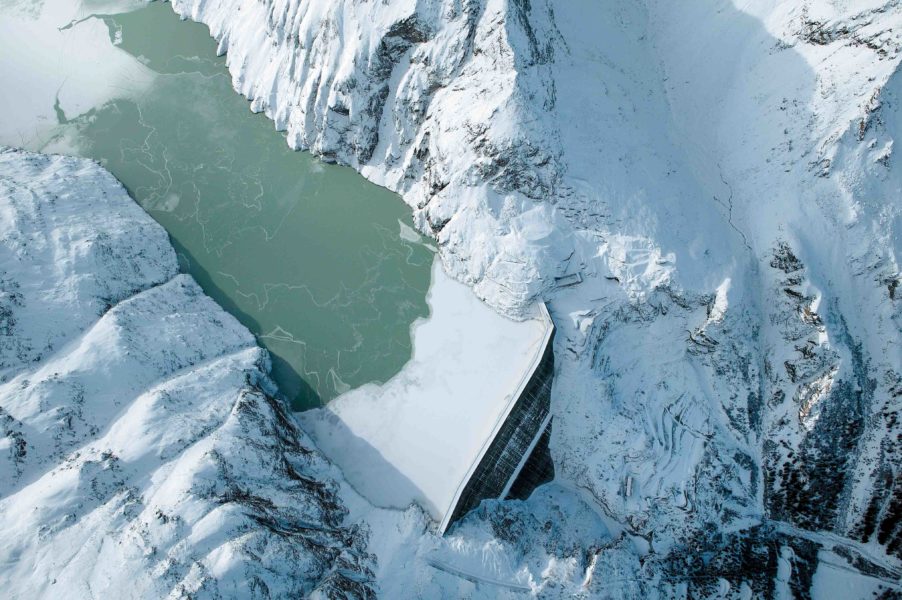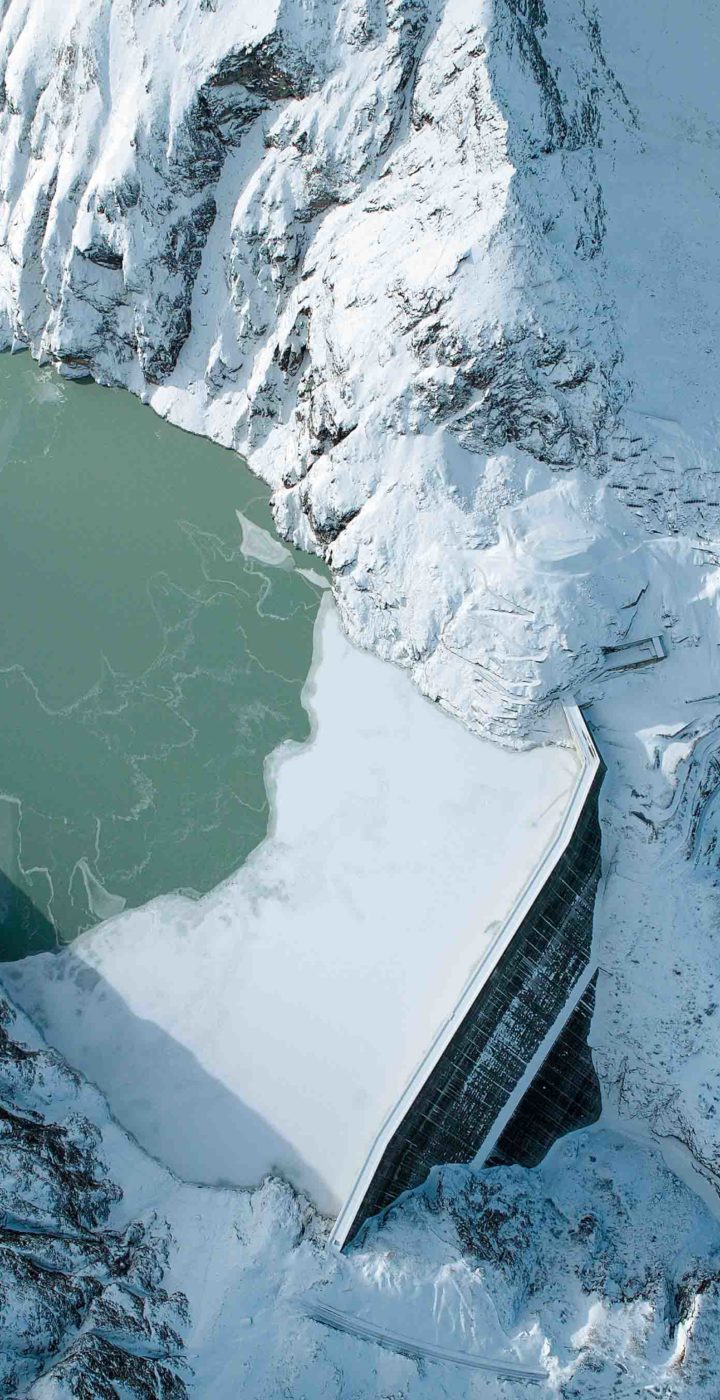The hydroelectric complex
The Grande Dixence and Alpiq hydroelectric complex uses the waters of the Dixence, Printze, Chennaz, Borgne and Visp basins to produce electricity according to the needs of its shareholders.
The hydroelectric complex
Longitudinal profile
To make use of the water from the Lac des Dix, three production plants are needed.
Longitudinal profile
Collecting works
Bringing together waters from a catchment area of 420 km2, two-thirds of which is covered in glaciers, that is the task of the facility’s network collector. 100 kilometres of galleries, including a main tunnel which is 24 kilometres long, at an altitude of 2,400 metres, in the heart of the mountain, bring together the waters which run between the Mischabel, Matterhorn and Mont Gelé mountains. 35 glaciers therefore supply the facility’s raw material, via 75 water intakes and 5 pumping plants, on average around 500 million m3 of water every year.
Collecting works
Water management
Running the complex to maximise performance requires a fine balance between the demand for economy and technical capacities. The operating centres at Grande Dixence and Alpiq receive the constant information required for management and supervision of the whole facility directly from the various plants as well as from numerous measuring points. They are also able to intervene at any moment on any of the operating components.
Water management
Storage
Towering at 285 m, the Grande Dixence is the tallest gravity dam in the world. It retains 400 million m3 of water. It forms the largest artificial lake in Switzerland (in volume). This concrete wall has a volume of 6 million m3 , the base is 200 m thick and the top of the dam is 700 m long, and it weighs 15 million tonnes. Inside the wall of the dam, there are 32 kilometres of tunnels and inspection chambers which allow the dam supervisors to continuously inspect the facility. The Cleuson buttress dam is a hollow gravity dam which is 87 m tall. It retains 20 million m3 of water from a catchment area including the Printze river and its influents on the left bank up to Tortin.
Storage
Production
Storage lakes are a reserve of energy available on demand. While nuclear power plants and run-of-river hydroelectric power plants produce ribbon power, 24 hours a day, storage power plants make it possible to generate what is known as peak and regulating energy that is available as quickly as possible and can flexibly compensate for fluctuations in electricity demand. Particularly with the development of new renewable energies, such as solar and wind power, whose production is intermittent and random, and the gradual decentralisation of power generation to many smaller units, storage power plants help to provide the right amount of electricity around the clock.
Production
Environmental impact
The current facility has contributed to the creation of an extended nature reserve in the Val des Dix, filled with rich and varied flora and fauna. The Cleuson-Dixence has been subject to various major ecological offsetting measures to preserve the environment.


